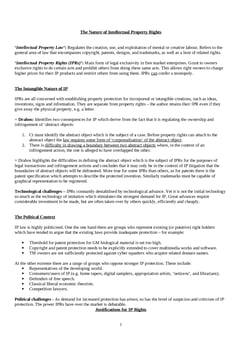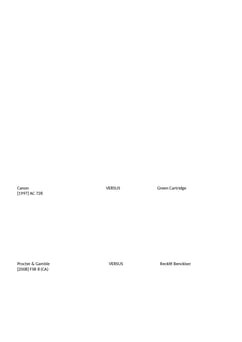Interlego AG v Tyco Industries Inc [1989] AC 217
Judgement for the case Interlego AG v Tyco Industries Inc
Table Of Contents
Lego had expired patent and design rights on its bricks. In 1972, Lego redrew the design drawings for its bricks – with substantial features of the previous design kept, and the only main changes being to the written information on the drawing which were of technical importance for manufacturing purposes.
Defendant made and sold bricks in Hong Kong which were compatible with those of Lego, by copying principal features of Lego’s design.
Issue was whether post-1972 drawings had copyright.
Lord Oliver
Skill, labour or judgment merely in process of copying does not confer originality.
-
Thus an exact copy is not original, even if making it required skill or labour.
Copy must contain some alteration or addition to the earlier work.
Whether addition is sufficient is question of degree having regard to quality of addition, and not the quantity.
-
Thus even relatively small addition may suffice.
is no universal test of originality.
i.e. test in William Hill cannot be applied to all copyright cases.
On facts, graphical drawings were not original.
Obiter
A photo of an existing painting (or painting of an existing photo) does not have copyright.
Despite skill required in making the copy of the original photo/painting, the copy painting or photo are unoriginal.
RELATED CASES
For Further Study on Interlego AG v Tyco Industries Inc

IP law notes fully updated for recent exams at Oxford and Cambridge. Th...
Need instant answers? Our AI exam tutor is here to help.
Ask questions 🙋 Get answers 📔 It's simple 👁️👄👁️
Our AI is educated by the highest scoring students across all subjects and schools. Join hundreds of your peers today.
Get StartedSimilar Cases
Related Product Samples
These product samples contain the same concepts we cover in this case.

 Since 2010, Oxbridge Notes has been a trusted education marketplace, supplying high-quality materials from top achievers at universities like Oxford, Cambridge, LSE, Harvard, and Yale.
Since 2010, Oxbridge Notes has been a trusted education marketplace, supplying high-quality materials from top achievers at universities like Oxford, Cambridge, LSE, Harvard, and Yale.